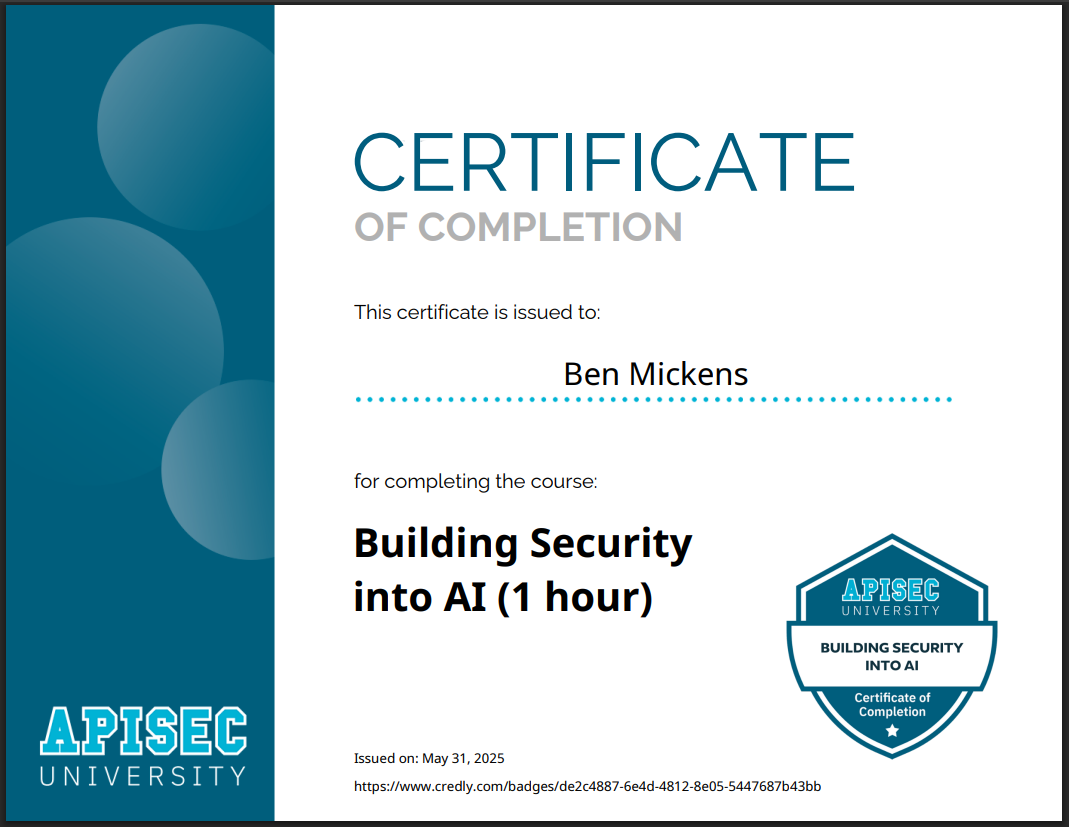Building Security into AI – Lessons from the Paranoia Trenches
I just finished the “Building Security into AI” course from APISec University. It was supposed to help me feel more secure. Instead, I walked away feeling like every dataset, model, and API I’ve ever touched might be compromised. Which, honestly, is probably a healthy mindset.
Here’s a breakdown of what I learned and how I’m putting it to use.
What the Course Covered (aka “Reasons to Be Concerned”)
- Internal data isn’t safe just because it’s yours. A few poisoned entries, and boom, your model thinks stop signs mean “go faster.”
- External dependencies are ticking time bombs. Third-party GitHub actions, pip packages, and publicly available datasets can be quietly compromised and passed around like a bad cold.
- Model training is a massive blind spot. You can poison weights just enough to pass validation but still nudge model behavior in specific, malicious ways. Cute.
- Input-based attacks include all the fun stuff like prompt injection, adversarial examples, and those weird pirate-talking LLMs no one asked for.
- Indirect attacks mean attackers can hide instructions in invisible Unicode or white text, and your AI will obediently follow them like a cursed Roomba.
- Outputs can leak training data, clone models, or spit out someone’s phone number from 2015. You know, the usual.
So What Am I Doing About It?
I'm not panicking (yet), but I am:
- Building actual threat models for every AI workflow I touch
- Validating data and dependencies like I'm reviewing a toddler’s Halloween candy
- Testing my own models with adversarial prompts and output inspection tools
- Using throttling, output sanitization, and rate limiting before someone uses my tool to build Skynet Lite
Final Thoughts
This course didn’t just add a shiny cert to my collection. It gave me a new lens for approaching AI development and security as the deeply connected mess it actually is.
Whether you're building LLM apps, working in cloud AI, or just trying to keep up with the chaos, I recommend giving this course a shot. Or at the very least, start asking yourself, “What could go wrong if someone fed this thing weird input?”
Spoiler: a lot.
